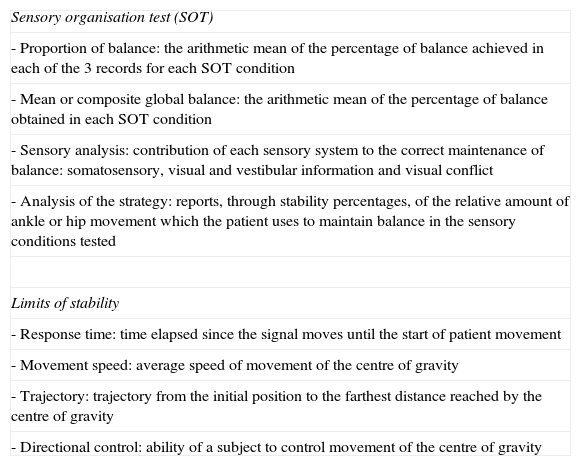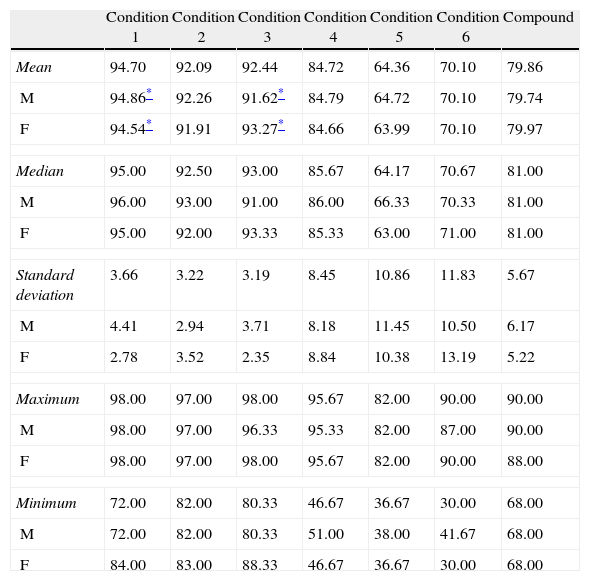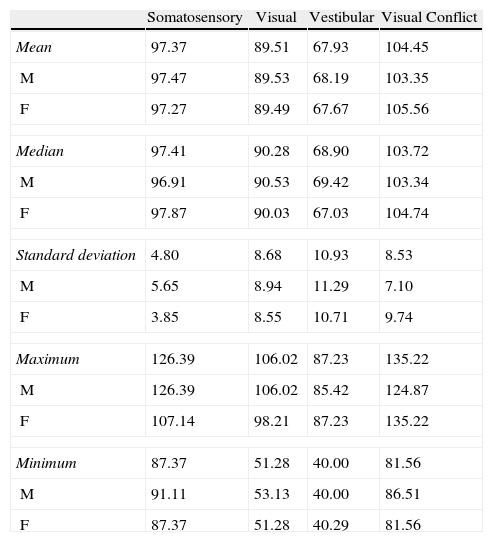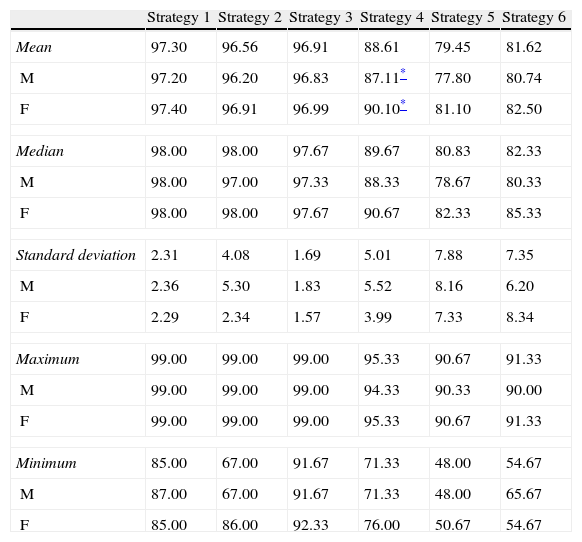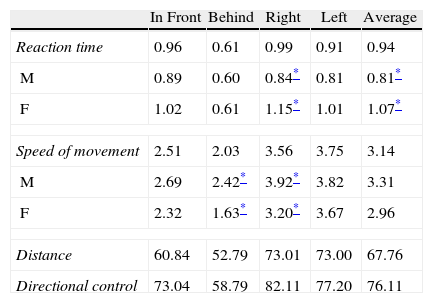The sensory organisation test and the limits of stability are the gold standard for dynamic posturography. It is postulated that these measurements vary depending on age, activity of the subject and musculoskeletal system, emotional condition or other factors. The aim of this study was to determine the influence of gender on the above-mentioned analyses.
Material and methods70 healthy subjects (35 males and 35 females); mean age: 44.9 years. A clinical history was taken and a physical and otoneurological exploration was performed for each subject, along with a posturography study using the Neurocom SMART Balance Master platform model. The statistical study was carried out with the ANOVA test (P<.05).
ResultsCondition 5 presented the lowest percentage of balance in both sexes (64.36%). The highest percentage of balance in males was in Condition 1 (P<.001) and the lowest in 3 (P=.030). There were no differences in the sensory analysis. The lowest employment of ankle strategy was in Condition 5 for both sexes (88.61%); women used the ankle strategy in Condition 4 more efficiently (P=.0129). There were also differences in the time of reaction towards the right (P=.022) and the mean (P=.011) (higher in females), and in the speed of movement backwards (P=.001) and towards the right (P=.04) (higher in males). In path length and directional control, there were no differences.
ConclusionsGender differences should be taken into consideration for vestibular rehabilitation. Greater speed in conducting the tests does not lead to better balance control.
El test de organización sensorial y los límites de estabilidad son el test de referencia de la posturografía dinámica. Se postula que estas mediciones pueden variar en función de la edad, actividad del sujeto y aparato locomotor o estados emocionales, entre otros. El objetivo de este trabajo es determinar la influencia del sexo sobre dichos análisis.
Material y métodos70 individuos sanos (35 varones y 35 mujeres), edad media 44,9 años. Se realizó historia clínica, exploración física y otoneurológica básica y un estudio posturográfico con la plataforma posturográfica modelo Smart Balance Master de Neurocom. Estudio estadístico con test de ANOVA (p<0,05).
ResultadosLa condición 5 presenta el menor porcentaje de equilibrio en ambos sexos (64,36%). Mayor porcentaje de equilibrio en varones en la condición 1 (p<0,001) y menor en la 3 (p=0,030). No hay diferencias en el análisis sensorial. Menor empleo de estrategia de tobillo en la condición 5 para ambos sexos (88,61%), las mujeres utilizan con mayor eficacia la estrategia de tobillo en la condición 4 (p=0,0129). Diferencias en el tiempo de reacción hacia la derecha (p=0,022) y el promedio (p=0,011) (mayores en mujeres), y en la velocidad de movimiento hacia atrás (p=0,001) y hacia la derecha (p=0,04) (mayores en varones). En el recorrido y el control direccional no hay diferencias.
ConclusionesLas diferencias entre sexos deben ser tenidas en cuenta para planificar la rehabilitación vestibular. Una mayor celeridad en la realización de las pruebas no lleva a un mejor control del equilibrio.
Artículo
Comprando el artículo el PDF del mismo podrá ser descargado
Precio 19,34 €
Comprar ahora






